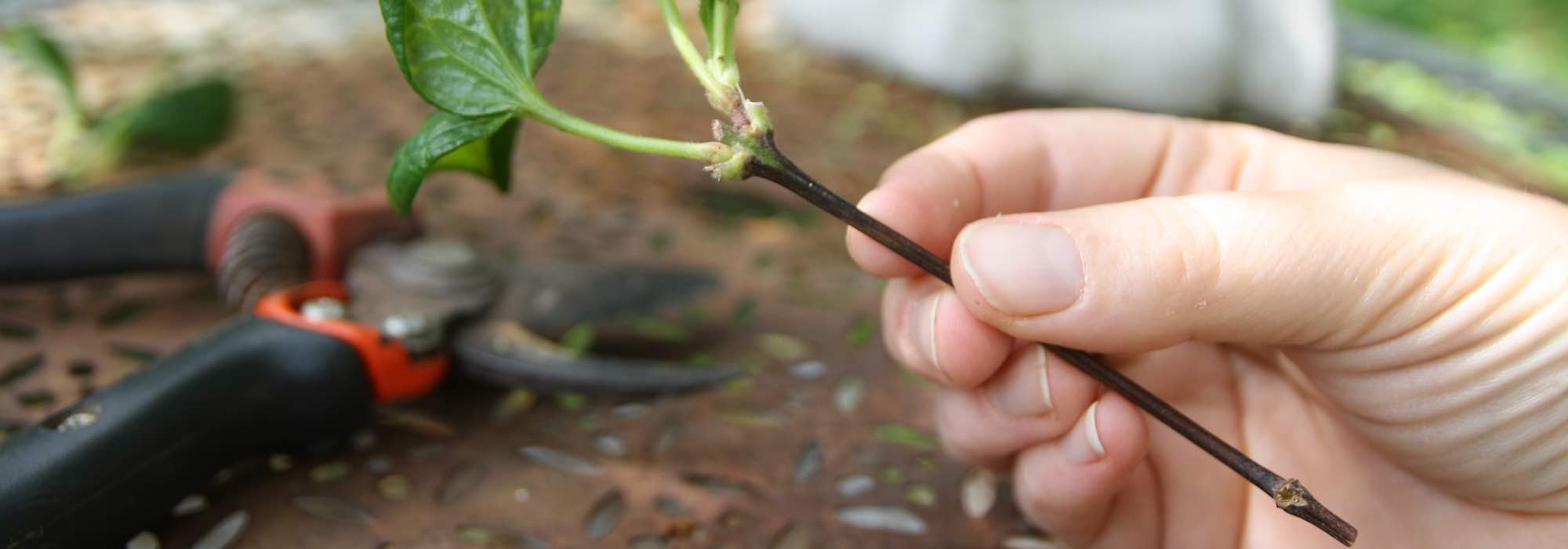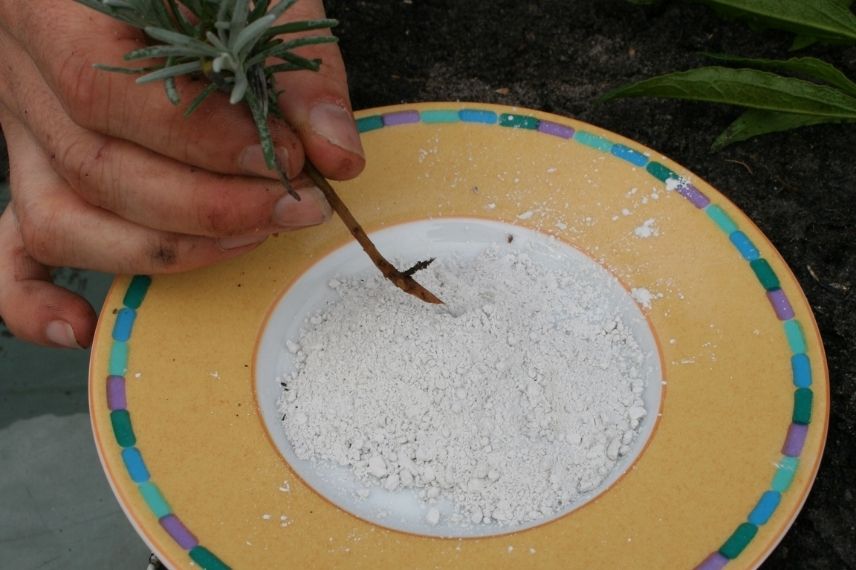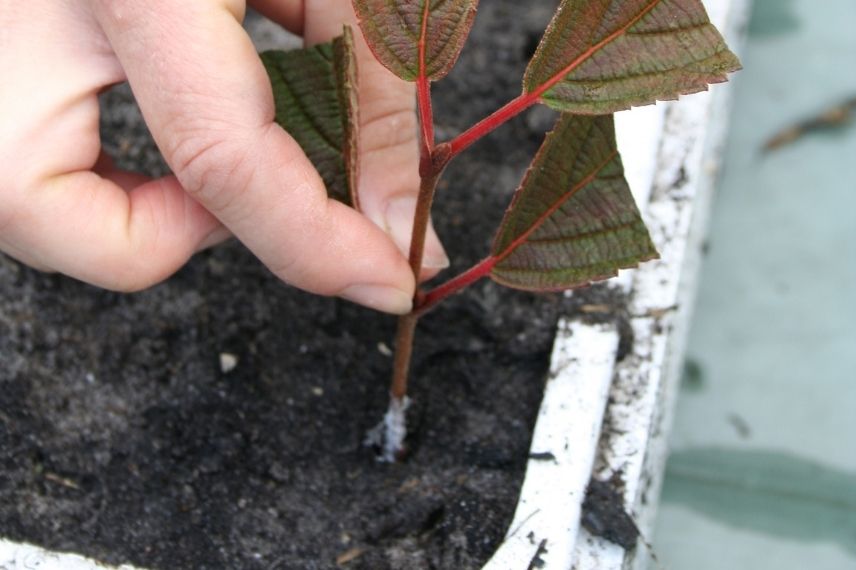
Root-related activators: an asset for propagation by cuttings
Advantages, limitations and tips
Contents
To multiply plants quickly and easily, gardeners often use propagation by cuttings. These allow a plant to be reproduced identically, unlike sowing, which can be unpredictable.
To learn more about this technique, see our advice sheet : Propagation by cuttings: everything you need to know about different techniques and our advice.
Using rooting activators can be useful for various reasons, to maximise chances of success. These activators previously contained synthetic plant hormones for propagation by cuttings, now banned from sale and use. But new effective and more environmentally friendly solutions have emerged, such as the Osiryl rooting activator, a product usable in organic agriculture (UAB). What are the advantages and disadvantages of rooting activators and the former synthetic plant hormones? What alternatives exist? Find our detailed advice and explanations!
What are root-related activators?
Hormones already naturally present
In their natural state, our plants already contain stimulators relating to root, a plant hormone called ‘auxin’. However, this ‘auxin’ is present in relatively low amounts, which can slow down rooting… and extend time before you can be sure the protocol has succeeded.
To overcome this problem and maximise effectiveness of propagation by cuttings, many professionals worked to develop a synthetic product similar to this auxin, with amplified effects: the plant hormone for propagation by cuttings. But synthetic phytosanitary products, including plant hormones for propagation by cuttings, are now banned from sale and use in France under the Labbé law in force from 1 January 2017 for local authorities and public establishments, and from 1 January 2019 for individuals.
→ Here is the link to the full text of the law
Ultimately, it is now possible to buy new types of activators relating to root in all forms. Manufacturers have adapted to needs and practices of gardeners: some activators relating to root are available in liquid form, gel or powder.
An easy-to-use product in the garden
In all cases, manufacturers specify usage recommendations on the packaging: you must follow them carefully to make best use of product, but this is usually fairly simple.
Generally, simply place powder or gel in a suitable container and dip the cut end of your cutting into it. However, dosing remains very important: always respect it to avoid any problem.
- Dip about 3 cm of the stem to propagate into the activator, tap lightly to remove excess before planting.
- Hole must be wide enough to plant stem easily: ensure it does not rub against sides, as you risk losing product efficacy.
Liquid-form solutions are simply diluted in water and then applied by watering. Here too, strictly respect manufacturer’s recommended dosage.

Stimulators relating to root are especially useful for plants that struggle to take root. They are not necessarily recommended for those with good ability to do so unaided: in that case, choosing natural alternatives may be sufficient to strengthen them.
What are the main benefits of root-related stimulants?
Products with multiple benefits
Even when using best propagation by cuttings techniques, it can be useful to know tips to increase our chances of success. For example, some carry out propagation by cuttings under a humidity dome to provide more moisture and increase chances of growth.
If these few good practices are not enough, you can use rooting stimulants to make rooting faster and more effective.
Beyond these basic properties, rooting stimulants can also cauterise wounds, which reduces risk of diseases developing and weakening your plants.
The specific case of rooting activator Osiryl
There is now a rooting activator from Solabiol, called Osiryl, in liquid, concentrated form, which promotes rooting of cuttings without supplying synthetic plant hormones. This product compatible with organic farming also presents itself as a rather economical alternative : a single 40 ml bottle allows preparation of up to 20 litres of solution by diluting with water.
As its name suggests, this product called « Osiryl » contains OSYR. The OSYR molecule is a biostimulant derived from lignocellulosic plant materials. It helps prevent degradation of hormones involved in rhizogenesis (process responsible for root development) and thus leads to stronger, more durable rooting. In addition, OSYR protects auxins, those natural plant hormones essential for rooting.
This type of product can perfectly be used alongside other natural rooting stimulants, such as Mycorhize Top Pouss Potager, which is also fully compatible with organic farming. This solution, presented as a powder composed of natural rock (kaolinite) and diatomaceous earth, helps make plants more resistant to stress. It is also observed that plants protected by this natural alternative produce more fruit and vegetables, often with more pronounced, sweeter flavours and improved mineral content.
Do activators relating to root have limits?
Risks from overdosing
Use of rooting stimulants remains fairly low-risk, provided manufacturer’s instructions are followed to avoid overdosing. However, these alternatives are of little use on plants capable of rooting quickly on their own. There is no need to use them in such cases, as effects will be minimal or non-existent. Here, best option is generally to choose correct methods of propagation by cuttings and, if desired, use natural stimulants.

By contrast, risks linked to overdosing on planting hormones were very real. When used in excess (beyond 0.10 g per stem intended for propagation), these synthetic plant hormones can cause burns at bases of cuttings. Such damage may slow down — or even make impossible — any root production. Consequences range from malformation to premature death of the young plant.
Making your own solutions for successful propagation by cuttings
But you can favour more natural, less risky methods for your plants. Aside from OSYR-based stimulants mentioned earlier, willow water is one of the most commonly used alternatives to greatly increase chances of success.
To prepare your willow water, simply cut willow branches, remove leaves and split branches into several sections no longer than 5 cm. Place them in a container filled with water and let macerate for at least 4 weeks.
After 4 to 6 weeks, a viscous gel will appear on surface of water, rich in salicyline. Store it in a glass jar and use within 48 hours (after that, it is less effective). To recover willow water, remove willow pieces using a sieve or strainer and pour liquid into another container.
Some also prepare willow water in one week: this is a quicker method and also effective, but salicyline concentration will be lower and effects will not be as noticeable as with water prepared over a month or a month and a half!
- Subscribe!
- Contents
































Comments